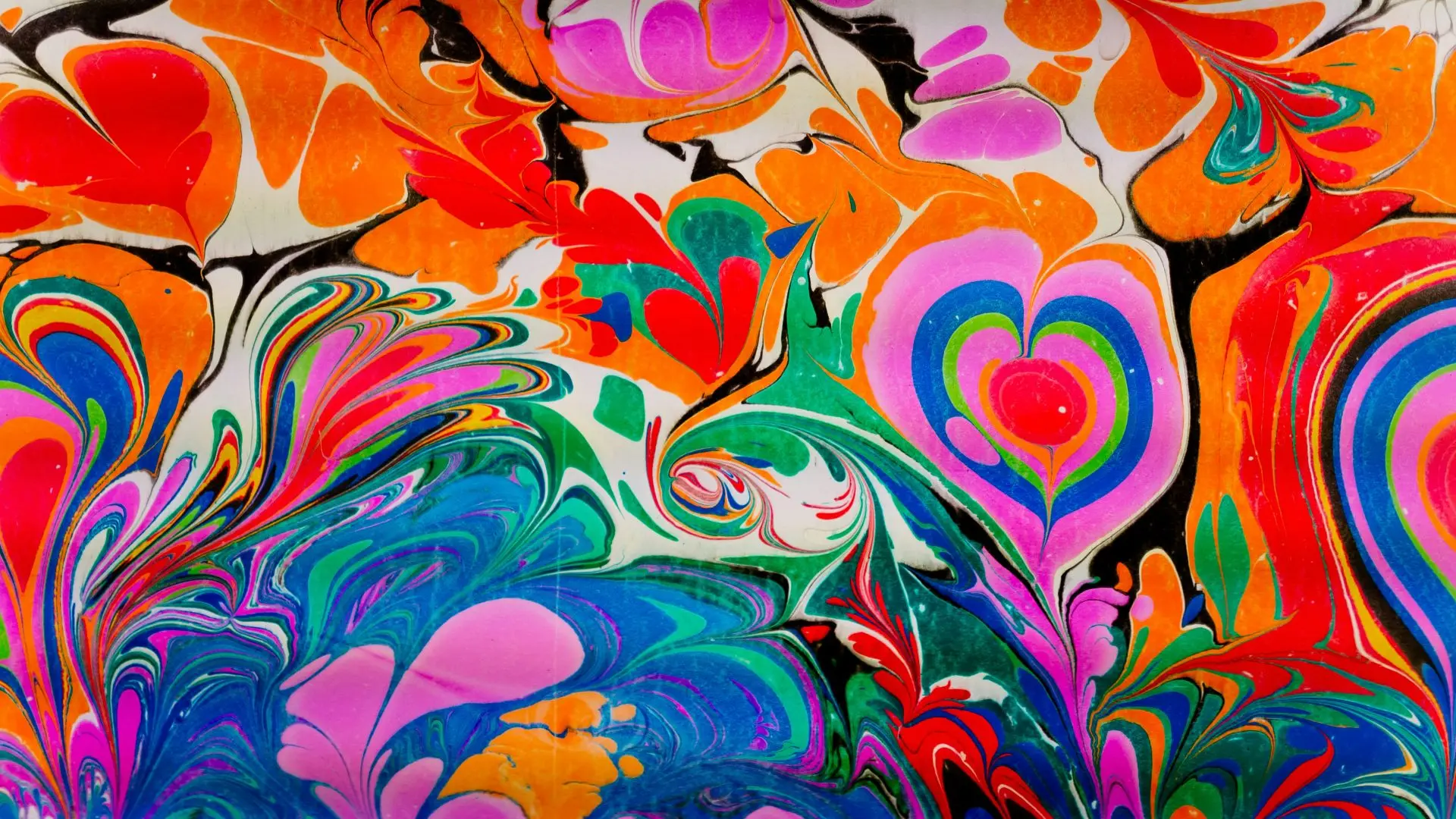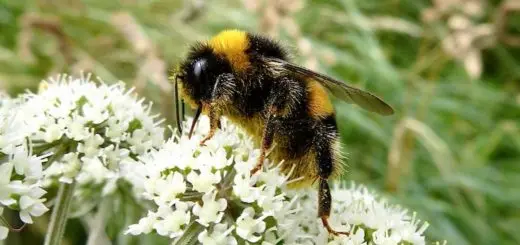The Symbolism of Animal Spirits in Various Cultures

Looking for more amazing products? Check out our online store and explore our collection here! Happy shopping!
Before diving in, please note: This post is for informational purposes only. If you’d like to know more about how we approach topics, feel free to check out our friendly Disclaimer Page.
Hey there, amazing readers! 
We’re committed to delivering quality posts, and your support (even just sticking around despite the ads) means everything to us. So, bear with us, and thanks for helping us keep the good vibes rolling. Now, on to the fun stuff!
TRANSLATE BUTTON AT THE END OF THE ARTICLE
A Quick Overview
Animal spirits have held a place of significance in various cultures for centuries.
They embody deeper meanings and represent the connection between the human experience and the animal kingdom.
From ancient civilizations to modern interpretations, these spirits serve as guides, protectors, and symbols of wisdom, strength, and other essential qualities.
In this article, we will explore the vibrant tapestry of animal spirits across different cultures, examining their roles, meanings, and the deep connections people have formed with them.
Exploring Animal Spirits: A Colorful Cultural Journey
Animal spirits are more than just symbols; they reflect the values, beliefs, and aspirations of different cultures.
Every culture has its unique relationship with animals, which can be traced back to the early days of human civilization.
Let’s take a walk through this colorful journey.
Cultural Significance: In many societies, animals represent traits that humans value, such as strength, loyalty, and wisdom.
For instance, the lion is often seen as a symbol of courage and nobility.
Spiritual Guides: Many people believe that animal spirits serve as spiritual guides that help individuals navigate through life’s challenges.
It is believed that these spirits can provide insights into one’s personality and life path.
Rituals and Ceremonies: In various cultures, people perform rituals to honor animal spirits.
This can involve storytelling, art, or even physical representations through masks or totems.
Art and Symbolism: Animal spirits are often depicted in art.
From cave paintings to modern sculptures, these representations communicate the relationship between humans and animals.
Totemism: Some societies practice totemism, where specific animals are believed to represent clans or families.
Each totem embodies its unique characteristics and teachings.
Cultural Exchange: As cultures intermingle, the symbolism of animal spirits often adapts, creating a rich tapestry of beliefs and practices.
This exchange enhances our understanding of the world and its diverse perspectives.
Shamanism: In shamanistic traditions, animal spirits play a vital role in healing and guidance.
Shamans often call upon these spirits during rituals to seek assistance for individuals in need.
Literature and Folklore: Animal spirits often feature in folklore and literature, teaching moral lessons and imparting wisdom.
A classic example is Aesop’s Fables, which uses animal characters to convey important life lessons.
Modern Interpretations: In contemporary society, many people still resonate with animal spirits.
They often look to animal symbols for inspiration, encouraging a deeper connection with nature.
Personal Connection: Ultimately, animal spirits offer a personal connection to the natural world.
They remind us of our place in the ecosystem and the lessons that can be learned through observing animal behavior.
The Meaning Behind Animal Spirits Across the Globe
Animal spirits carry specific meanings and attributes that vary widely among cultures.
Each animal is steeped in symbolism, often reflecting the environment and historical context of the people who revere them.
Connect with Angels, Guides, and Master Teachers – begin here.
Bear: Symbolizes strength, courage, and leadership.
In many Native American cultures, bears are seen as protective spirits.
Eagle: Represents freedom and vision.
It is often considered a messenger between the earthly and spiritual realms.
Wolf: A symbol of loyalty and teamwork.
Wolves often signify the importance of family and community bonds.
Owl: Typically associated with wisdom and intuition.
Owls are often regarded as guardians of knowledge and insight.
Tiger: Represents power and passion.
In certain Asian cultures, tigers symbolize bravery and protection.
Dolphin: Associated with harmony and intelligence.
Dolphins often symbolize communication and social connections.
Fox: Represents cunning and adaptability.
In folklore, foxes are often seen as clever tricksters.
Snake: Signifies transformation and healing.
In various traditions, snakes are linked to rebirth and renewal.
Horse: Embodies freedom and nobility.
Horses often represent strength, grace, and the spirit of adventure.
Butterfly: Symbolizes transformation and beauty.
Butterflies often remind us of the beauty in change and growth.
The Role of Animal Spirits in Indigenous Cultures
Indigenous cultures around the globe have long celebrated the significance of animal spirits.
These spirits are woven into the very fabric of their beliefs, shaping their understanding of the world.
Connection to Nature: Indigenous peoples often view themselves as part of the natural world.
They believe that animal spirits guide them and teach them how to live in harmony with nature.
Ritual Practices: Many indigenous cultures hold ceremonies to honor animal spirits.
These rituals can include dances, songs, and offerings to show respect and gratitude.
Storytelling: Oral traditions play a crucial role in passing down knowledge about animal spirits.
Stories illustrate the traits of various animals and how they can guide individuals.
Healing Practices: In some cultures, shamans invoke animal spirits during healing rituals.
They believe that these spirits can help restore balance and health to individuals.
Cultural Identity: Animal spirits often form a core part of cultural identity among indigenous peoples.
They serve as totems that connect individuals to their ancestry and heritage.
Environmental Stewardship: Many indigenous cultures emphasize the importance of protecting the environment.
They draw inspiration from animal spirits to advocate for conservation and sustainable practices.
Symbolism in Art: Indigenous art often features powerful representations of animal spirits.
These artworks convey stories and beliefs, enriching the cultural narrative.
Spiritual Connection: For many indigenous peoples, animal spirits are seen as ancestors or guides.
This deep spiritual connection fosters respect for all living beings.
Educational Tools: Animal spirits serve as educational tools, teaching the younger generations about values such as respect, bravery, and community.
Global Recognition: The wisdom embedded in indigenous beliefs about animal spirits is gaining recognition worldwide, inspiring movements to protect native cultures and their environments.
Ancient Egypt: Reverence for Cats and Sacred Animals
In ancient Egypt, animals held a profound place in society, often associated with gods and goddesses.
The Egyptians revered certain animals, shaping their spirituality and everyday life.
Cats: Cats were sacred and symbolized protection and fertility.
The goddess Bastet, depicted as a lioness or a domestic cat, was worshipped as the protector of home and family.
Horus: The falcon-headed god Horus represented the sky, kingship, and protection.
The Egyptians believed that the pharaoh was the earthly embodiment of Horus.
Anubis: Represented by a jackal, Anubis was the god of the afterlife and mummification.
His presence symbolized protection during the journey to the afterlife.
Cattle: Cows were revered for their nurturing qualities.
The goddess Hathor, often depicted as a cow, represented motherhood, love, and joy.
Scarabs: The scarab beetle symbolized rebirth and transformation, closely associated with the sun god Ra.
Scarab amulets were commonly worn for protection.
Birds: Various bird species were honored, especially the ibis, associated with the god Thoth, representing wisdom, writing, and knowledge.
Crocodiles: The Nile crocodile was linked to the goddess Sobek, who symbolized fertility and protection, emphasizing the importance of the Nile River.
Mummification: The Egyptians often mummified animals, particularly cats and birds, as offerings to the gods, reflecting their spiritual beliefs.
Art and Architecture: Animals frequently appeared in Egyptian art, symbolizing different divine qualities, and were depicted in temples and tombs.
Modern Influence: Today, ancient Egyptian animal symbolism continues to influence popular culture, from movies to fashion, showcasing its enduring legacy.
Native American Beliefs: Totems and Their Powers
Native American cultures are rich with beliefs surrounding animal spirits, often expressed through totems.
Each tribe holds unique interpretations, but common themes emerge.
Totem Poles: Many tribes create totem poles, which feature carved animals representing family lineage, history, and spiritual beliefs.
Each animal on a pole tells a story.
Animal Guides: Native Americans believe that individuals have animal guides that accompany them throughout life.
These guides offer wisdom and protection.
Cultural Diversity: Different tribes have unique animal spirits.
For example, the Lakota might honor the buffalo, while the Cherokee might revere the deer.
Ceremonial Practices: Rituals often honor animal spirits, invoking their teachings during important life events such as births, marriages, and rites of passage.
Dream Interpretation: Many Native Americans interpret dreams involving animals as messages from the spirit world, guiding their actions and decisions.
Symbolism in Dances: Animal spirits are often honored through dance, where participants embody the characteristics of the animals they represent.
Legends and Myths: Many legends feature animals as central characters, teaching valuable life lessons about respect, bravery, and humility.
Respect for Nature: Animal spirits emphasize living in harmony with nature.
This belief fosters a deep respect for all living beings and the environment.
Personal Connections: Individuals may feel a personal connection to an animal spirit, which can influence their identity and life choices.
Modern-Day Practices: Today, many Native Americans continue to honor animal spirits through art, storytelling, and community gatherings, preserving this vital aspect of their culture.
The Chinese Zodiac: Animals and Their Symbolic Traits
The Chinese Zodiac is one of the most recognized systems of animal symbolism.
It features twelve animals, each representing specific attributes and characteristics.
Rat: Clever and resourceful, rats symbolize wealth and abundance.
They are seen as quick thinkers and adaptable.
Ox: Hardworking and persistent, oxen embody strength and reliability.
They are often viewed as dependable partners.
Tiger: Known for bravery and competitiveness, tigers represent power and protection.
They are viewed as fearless leaders.
Rabbit: Gentle and kind, rabbits symbolize peace and tranquility.
They are associated with creativity and intuition.
Dragon: A symbol of strength and good fortune, dragons embody power and authority.
They are revered in Chinese culture.
Snake: Intelligent and enigmatic, snakes are linked to wisdom and transformation.
They often represent insight and strategy.
Horse: Energetic and free-spirited, horses symbolize adventure and independence.
They are seen as enthusiastic and strong-willed.
Goat: Compassionate and gentle, goats represent harmony and creativity.
They are viewed as nurturing and soft-hearted.
Monkey: Witty and clever, monkeys symbolize intelligence and curiosity.
They are known for their playful nature and problem-solving skills.
Rooster: Observant and hardworking, roosters embody confidence and punctuality.
They are seen as diligent and enthusiastic.
Dog: Loyal and protective, dogs symbolize friendship and honesty.
They are viewed as faithful companions.
Pig: Generous and compassionate, pigs represent abundance and prosperity.
They are seen as kind-hearted and easygoing.
The Chinese Zodiac plays a significant role in cultural celebrations, particularly during the Lunar New Year, where each animal’s traits influence predictions for the year ahead.
People often refer to their Chinese zodiac sign to gain insight into their personality and compatibility with others.
Japanese Folklore: Fox Spirits and Benevolence
In Japanese culture, foxes, or "kitsune," hold significant spiritual and mystical meanings.
These creatures are deeply embedded in folklore, representing a fascinating blend of benevolence and mischief.
Shape-shifting: Kitsune are believed to have the ability to shape-shift into human form, often taking on the guise of beautiful women.
This has led to many stories about their cunning and charm.
Guardian Spirits: In Shinto beliefs, kitsune are viewed as messengers and servants of the rice deity Inari.
They embody fertility, prosperity, and protection.
Dual Nature: While kitsune can be benevolent and protective, some stories depict them as tricksters who play pranks on humans.
This duality adds depth to their character.
Symbol of Wisdom: In many tales, foxes are associated with wisdom and intelligence.
They often outsmart other characters, showcasing their cleverness.
Cultural Representation: Foxes frequently appear in traditional Japanese art, literature, and festivals, emphasizing their cultural significance.
Folklore Tales: Many stories feature kitsune as central characters, teaching lessons about humility, respect, and the consequences of actions.
Modern Adaptations: Today, kitsune remain popular in anime, manga, and video games, bridging traditional beliefs with contemporary culture.
Mythological Associations: Kitsune are often linked to the spiritual world, embodying the connection between humans and the divine.
Festivals: Inari shrines often celebrate kitsune, hosting festivals that honor these fox spirits and their protective qualities.
Personal Connections: Many Japanese people feel a personal connection to kitsune, identifying with their qualities or seeking their guidance through various life challenges.
Celtic Traditions: Animals as Symbols of Wisdom
Celtic traditions are rich with animal symbolism, with various creatures embodying wisdom, strength, and spirituality.
These beliefs are woven into their mythology, art, and everyday life.
Crows and Ravens: Often associated with the goddess Morrigan, these birds symbolize prophecy, transformation, and battle.
They are seen as messengers between worlds.
Stags: Representing nobility and strength, stags are linked to the god Cernunnos and symbolize the power of nature and fertility.
Horses: In Celtic mythology, horses embody freedom and the connection between the earthly and spiritual realms.
They often appear in tales of heroes and warriors.
Otters: Symbolizing playfulness and curiosity, otters are associated with water and the emotional realms, encouraging joy and laughter.
Snakes: Often seen as symbols of transformation and healing, snakes are linked to ancient wisdom and the cycles of life.
Salmon: In Celtic stories, salmon represent knowledge and insight.
They are often associated with the pursuit of wisdom and understanding.
Wolves: Symbolizing loyalty and fierce protection, wolves are seen as guardians of family and community.
Bears: Representing strength and introspection, bears embody the spirit of courage and inner strength, often appearing in stories of transformation.
Rabbits: Known for their fertility and connection to the earth, rabbits symbolize abundance and the arrival of spring.
Celtic Knots: Depictions of animals often appear in Celtic art, showcasing intricate designs that reflect the interconnection of all living beings.
Celtic animal symbols teach lessons about respecting nature and valuing the wisdom that animals impart.
Their influence continues to inspire modern interpretations of Celtic spirituality.
African Mythology: The Importance of Animal Spirits
Animal spirits play a vital role in African mythology, with various animals representing different values and teachings.
These beliefs are rooted in the relationship between people and the natural world.
Lion: Often seen as the king of the jungle, lions symbolize strength, courage, and leadership.
They are revered in many cultures as symbols of protection.
Elephant: Representing wisdom and memory, elephants embody family ties and loyalty.
They are often depicted in stories that highlight compassion and strength.
Crocodile: Associated with power and adaptability, crocodiles symbolize the ability to navigate both land and water, reflecting resilience.
Hippo: Hippos are often linked to fertility and protection.
They play a significant role in various creation myths across the continent.
Giraffe: Symbolizing grace and perception, giraffes are often seen as guardians of the savanna, reflecting harmony with nature.
Turtle: In several African cultures, turtles symbolize wisdom and endurance.
They are often depicted in stories that teach patience and perseverance.
Birds: Various birds hold special meanings, often symbolizing freedom and communication between the earthly and spiritual realms.
Ancestral Spirits: Many African cultures believe that animal spirits can connect them with their ancestors, providing guidance and wisdom from the past.
Rituals and Ceremonies: Animals often play a central role in rituals, where they are honored and their qualities celebrated through dance, music, and storytelling.
Environmental Harmony: African mythologies emphasize living in harmony with nature, drawing wisdom from animal spirits to advocate for conservation and respect for all living beings.
Hinduism and the Sacred Cow: A Celebration of Life
In Hinduism, the cow holds a sacred place, symbolizing nourishment, motherhood, and fertility.
The symbolism extends beyond reverence to encompass broader spiritual beliefs.
Symbol of Abundance: The cow is seen as a giver of life, providing milk, which is central to many dietary practices in Hindu culture.
Mother Figure: The cow embodies the nurturing qualities of a mother.
Hindus refer to cows as "Gau Mata," or Mother Cow, emphasizing their protective nature.
Cultural Festivals: Many festivals celebrate the cow, such as Gopashtami, where cows are honored with special rituals, showcasing their importance in the community.
Divine Associations: The cow is associated with various deities, including Lord Krishna, who is often depicted as a cowherd, emphasizing the bond between humans and cows.
Non-violence Principle: The sanctity of the cow aligns with the principle of ahimsa (non-violence), promoting compassion towards all living beings.
Economic Significance: Beyond spiritual beliefs, cows play a crucial role in agriculture and the economy, providing labor and resources to rural communities.
Cows in Art: Many Hindu artworks depict cows in reverential ways, symbolizing purity and holiness, often appearing in temples and homes.
Cultural Practices: Milk and dairy products derived from cows are integral to many religious rituals and ceremonies, symbolizing purity and devotion.
Modern Advocacy: The reverence for cows has led to advocacy for animal rights, promoting compassion and humane treatment of all creatures.
Global Influence: Today, the symbolism of the cow resonates with people around the world, inspiring movements that promote sustainability, compassion, and respect for all living beings.
Modern Interpretations: Animal Spirits in Today’s World
In our contemporary society, the concept of animal spirits continues to inspire individuals across diverse cultures.
The relevance of these beliefs has evolved but remains impactful.
Personal Connection: Many people identify with specific animal spirits, believing they embody traits that resonate with their personality and life experiences.
Meditation and Mindfulness: Some individuals use animal spirits as focal points for meditation, seeking to connect with their energy and wisdom during quiet reflection.
Art and Creativity: Artists often draw inspiration from animal spirits, creating works that reflect their characteristics and the lessons they impart.
Wildlife Conservation: The reverence for animal spirits is leading to a greater emphasis on wildlife conservation and environmental awareness, fostering a deeper connection with nature.
Healing Practices: Some modern healing practices incorporate animal spirit symbolism, using these energies for emotional and spiritual healing.
Cultural Festivals: Many communities celebrate animal spirits through festivals and gatherings that highlight their significance, fostering a sense of unity and respect.
Fitness and Wellbeing: Animal spirit symbolism has found its way into fitness and wellness, with practices like yoga incorporating animal poses to honor their strength and grace.
Esoteric Practices: Some individuals explore animal spirits through astrology, tarot, and other esoteric practices, drawing insights from their symbolic meanings.
Social Media Influences: Platforms like Instagram and TikTok allow people to share their connections to animal spirits, creating communities that celebrate these beliefs.
Personal Growth: People often turn to animal spirits for guidance in personal development, using their symbols to inspire growth, resilience, and courage in their lives.
Embracing Animal Spirits: Finding Personal Connections
Finding personal connections to animal spirits can be a transformative experience.
Here are some ways to embrace these connections in your life.
Reflection: Take time to reflect on which animals you feel drawn to.
Consider what traits resonate with you.
Nature Walks: Spend time in nature observing animals.
Notice their behaviors and how they might reflect your own life journey.
Artistic Expression: Create art or write stories inspired by animal spirits.
This can deepen your understanding and appreciation of their symbolism.
Meditation: Use meditation to connect with your chosen animal spirit.
Visualize yourself embodying their qualities and wisdom.
Journaling: Keep a journal to document your experiences and insights related to animal spirits.
Reflect on how they influence your decisions and emotions.
Community Engagement: Participate in community events that celebrate animal spirits.
This can foster connections with like-minded individuals.
Cultural Learning: Explore different cultures’ beliefs about animal spirits.
This broadens your perspective and enriches your understanding.
Guided Rituals: Create personal rituals that honor your animal spirit.
This could include lighting a candle, offering a small token, or simply taking a moment of silence.
Daily Affirmations: Incorporate animal spirit affirmations into your daily routine.
This serves as a reminder of their teachings and qualities.
Living in Harmony: Strive to live in harmony with nature, reflecting the values of your chosen animal spirit in your daily life decisions.
Conclusion
The symbolism of animal spirits across cultures offers a rich tapestry of understanding and connection.
From the revered cow in Hinduism to the cunning fox in Japanese folklore, each animal carries unique meanings that resonate with the human experience.
By exploring these beliefs, we can find personal connections that inspire our lives, guiding us through challenges and helping us cherish the beauty of the natural world.
Embracing animal spirits cultivates respect for all living beings and reminds us of our shared place in the vast web of life.
So, the next time you encounter an animal, take a moment to reflect on the wisdom they may offer.

The Enlightenment Journey is a remarkable collection of writings authored by a distinguished group of experts in the fields of spirituality, new age, and esoteric knowledge.
This anthology features a diverse assembly of well-experienced authors who bring their profound insights and credible perspectives to the forefront.
Each contributor possesses a wealth of knowledge and wisdom, making them authorities in their respective domains.
Together, they offer readers a transformative journey into the realms of spiritual growth, self-discovery, and esoteric enlightenment.
The Enlightenment Journey is a testament to the collective expertise of these luminaries, providing readers with a rich tapestry of ideas and information to illuminate their spiritual path.
Our Diverse Expertise
While our primary focus is on spirituality and esotericism, we are equally passionate about exploring a wide range of other topics and niches 

To ensure we provide the most accurate and valuable insights, we collaborate with trusted experts in their respective domains 
Our blog originally focused on spirituality and metaphysics, but we’ve since expanded to cover a wide range of niches. Don’t worry—we continue to publish a lot of articles on spirituality! Frequently visit our blog to explore our diverse content and stay tuned for more insightful reads.
Hey there, amazing reader! 
Check out our store here and take a peek at some of our featured products below! Thanks for being awesome!













